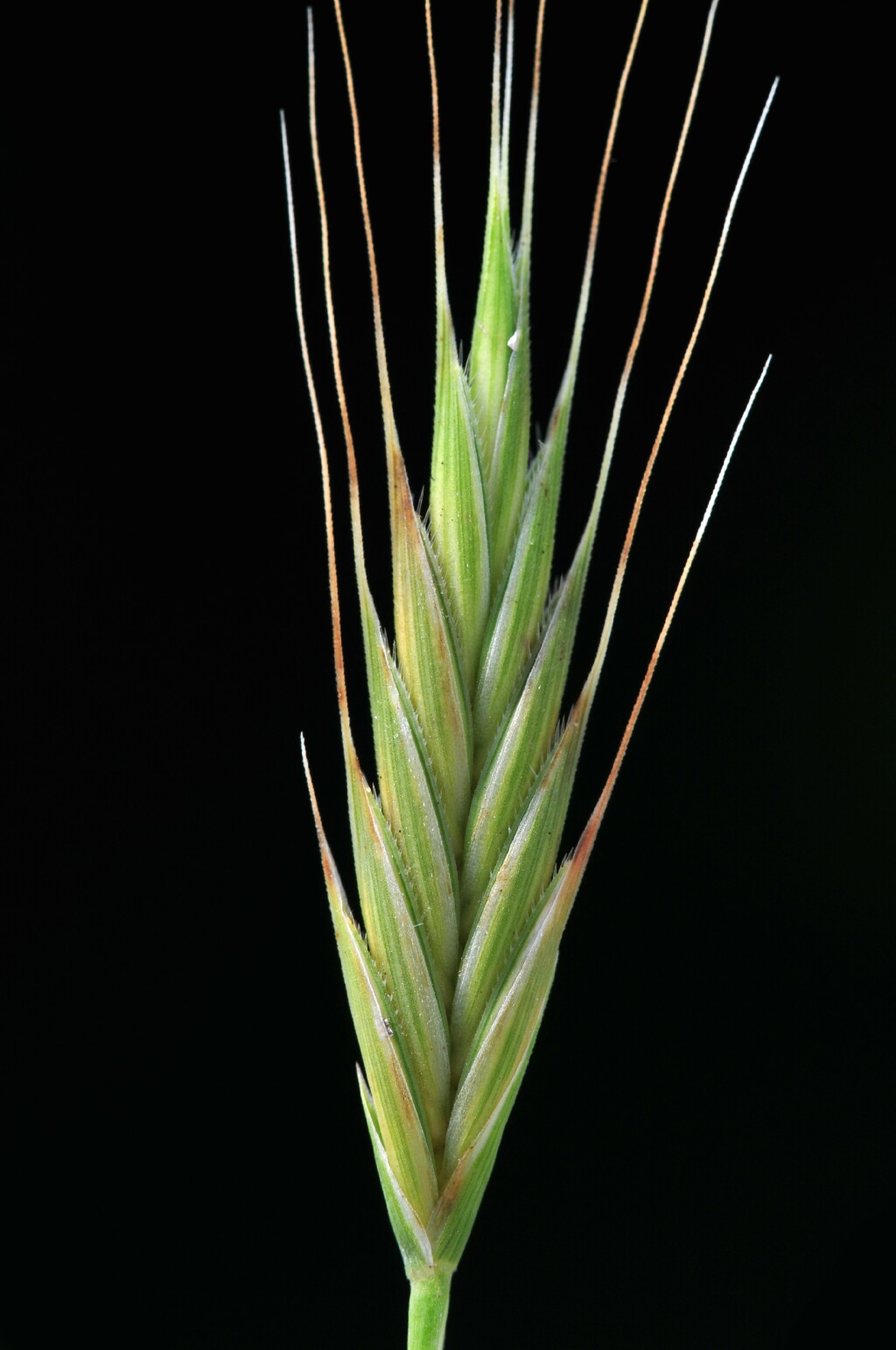Brachypodium distachyon
(L.) P.Beauv. False BromeAnnual, culms often geniculate near base, rarely branched, to 40 cm high, nodes pubescent. Leaves scabrous, usually with scattered hairs; blades flat, to 8 cm long and 5 mm wide, with a prominent, usually ciliate marginal vein; ligule membranous, hairy, truncate or ragged at apex, c. 1.5 mm long. Inflorescence a raceme of up to 6 shortly pedicellate to subsessile spikelets. Spikelets lanceolate, 1.5–2.5 cm long (excluding awns), 7–15-flowered; lower glume 3–5-nerved, c. 4 mm long, upper glume 5–7-nerved, exceeding the lower by up to 2 mm; body of lemma 8–10 mm long, tuberculate, awn slightly longer than body; palea equal to body of lemma with conspicuous marginal bristles. Flowers Sep.–Dec.
MuM, Wim, VVP, VRiv, GipP, OtP, Gold, CVU, GGr, NIS. Also naturalised in WA, SA, NSW, Tas., widely in temperate regions world-wide. Indigenous in the Mediterranean region to western Asia. Occurs chiefly on sandy or rocky soils, particularly on basalt in the south near Melbourne and on seasonally wet ground in the north.
Walsh, N.G. (1994). Poaceae. In: Walsh, N.G.; Entwisle, T.J., Flora of Victoria Vol. 2, Ferns and Allied Plants, Conifers and Monocotyledons, pp. 356–627. Inkata Press, Melbourne.
 Spinning
Spinning




